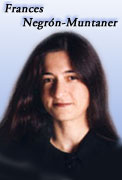 For those too young to remember (or perhaps old enough to want to forget), singer La Lupe — born Guadalupe Victoria Yoli in Cuba in 1938 — became famous not only for her distinctive "fílin" in singing boleros and other Caribbean genres, but in her idiosyncratic live performances. La Lupe’s signature style included throwing shoes into the air, flinging jewelry (among other objects) to the audience, cursing, groaning, tearing her hair out, shredding her clothes, ruining her makeup, screaming desperately, and convulsively throwing herself on the floor in what her first husband ironically described as "epileptic seizures."
For those too young to remember (or perhaps old enough to want to forget), singer La Lupe — born Guadalupe Victoria Yoli in Cuba in 1938 — became famous not only for her distinctive "fílin" in singing boleros and other Caribbean genres, but in her idiosyncratic live performances. La Lupe’s signature style included throwing shoes into the air, flinging jewelry (among other objects) to the audience, cursing, groaning, tearing her hair out, shredding her clothes, ruining her makeup, screaming desperately, and convulsively throwing herself on the floor in what her first husband ironically described as "epileptic seizures."
Born in Cuba, and having lived in New York and Puerto Rico while in exile, La Lupe is currently making a big comeback, particularly among Latinos. More than a decade after Pedro Almódovar revived the former bogaloo star in Women on the Verge of a Nervous Breakdown by closing with her mega hit "Puro Teatro," E! Entertainment has already aired La Lupe: The Queen of Latin Soul, the Puerto Rico Traveling Theater premiered La Lupe: My Life, My Destiny directed by Luis Caballero last January, indie filmmaker Ela Troyano is working on a documentary, essayist José Quiroga includes a section in his recent book Tropics of Desire, and scholar Frances Aparicio pays tribute in her Listening to Salsa, published in 1998. If these acts are not enough to signal a strong popular identification with this pop culture icon, a bill introduced in the Bronx City Council to rename East 140th Street (between St. Anns and Cypress Avenues) -- "La Lupe Way" has been approved.
Certainly La Lupe was famous during her time, playing with major acts like Tito Puente and Mongo Santamaria, but her iconic status can only be assured by those of us living well after she passed on through the hell of her songs and the heaven of her Yoruba and Pentecostal faiths.
And there are reasons why.
Some critical contemporaries attributed the intensity of La Lupe’s performances to drug addiction, craziness, being "low class," and plain eccentricity, but she had an even better explanation: "I think people like me because I do what they would want to do but don’t dare." Others like Cuban writer Guillermo Cabrera Infante and musicologist Cristóbal Díaz Ayala, go a bit further to conclude that what made La Lupe electrifying was not only her talent, but the fact that the singer did everything that many Cubans wanted to do before and after the 1959 revolution and its ensuing chaos: kick, scream, suffer, cry, and have uncontrollable fits of exasperation.
In writing — not to say living — with and across many Puerto Ricos, I find myself longing for La Lupe. A performer who provided release from the emotions that overcame her contemporaries living through a period of radical change, frustrations beyond belief, political convulsions, physical and emotional exile, and family separations.
For who wouldn’t want to throw themselves on the floor and tear their clothing to pieces after reading the newspapers, watching the news, or listening to the morning radio shows? Who doesn’t want to tear his or her hair out when driving through a merciless traffic jam or trying to obtain basic services from a government office or utility? Who wouldn’t want to throw wigs, watches, and Wonder bras at anyone with the guts to look at you for a second too long in a deserted street?
The recent religious holidays are usually considered as a time of reflection, introspection, and self-effacement. But given the last few years — from the apotheosis of Félix Trinidad’s boxing victories to Miss Universe, from Vieques to corruption scandals, from brutal violence against women to the election of the first female governor — I am sure that more than increasing the judiciary’s case load, taking private pleasure at your neighbor’s pain enroll in yoga classes, what we need to do is learn from La Lupe.
In other words, find a cultural resource that enables us to stage a cathartic performance and disintoxicate ourselves from the tremendous frustration and rage that lives in us. Or as La Lupe would say: "Aish!" "Ah!" "Uhh!"



